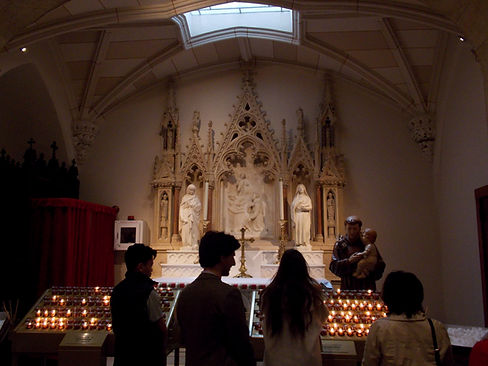CardiAngel
in Religious Sites
Religious sites—churches, mosques, temples, synagogues, and other places of worship—serve as important community centers hosting gatherings of people of all ages. In these spaces, sudden cardiac arrest (SCA) can occur unexpectedly. Having an automated external defibrillator (AED) on-site ensures a prompt and effective emergency response, safeguarding worshippers, staff, and visitors alike.

Why AEDs Are Essential in Religious Sites?
-
Large and Diverse Congregations: Religious gatherings typically include attendees of all ages, from young children to elderly adults, some of whom may have underlying health issues.
-
Limited Medical Support on Site: Most religious sites lack immediate professional medical personnel, making AEDs crucial for initial response.
-
Promotes Community Safety and Preparedness: Equips volunteers and staff to act quickly in emergencies, enhancing the overall safety culture.
-
Accessibility for Elderly and Vulnerable Visitors: Religious sites often serve populations with higher cardiac risk, such as seniors or people with chronic illnesses.
-
Ensuring Safety in Quiet, Sometimes Isolated Locations: Many places of worship are located away from immediate medical help, so onsite AEDs provide critical first response capability.
Why CardiAngel Is Ideal for Religious Sites?
-
User-Friendly and Clear Instructions: Designed to facilitate confident use by trained team members and emergency volunteers.
-
Compact and Easily Accessible: Can be discreetly mounted in common areas such as lobbies, prayer halls, or entrances. chaotic situations.
-
Fast Shock Delivery: Timely defibrillation increases survival chances in critical moments.
-
Reliable Daily Self-Tests: Ensures readiness without burdening site staff.
-
Multilingual Support: Suitable for diverse congregations with varying language needs.
-
Compact and Lightweight for Flexible Installation: Allows easy placement in multiple accessible locations to maximize response times during emergencies.

Where to Place CardiAngel AEDs?
-
Main Prayer Halls: Entrances, side walls, or behind central seating areas.
-
Prayer & Worship Halls: Within or adjacent to main prayer rooms, chapels, or sanctuaries where people congregate in large numbers.
-
Community Halls & Meeting Rooms: Multipurpose halls, meeting rooms, or dining areas
-
Staff Offices & Administrative Areas: Where religious leaders, staff, or volunteers are stationed during events or services.
-
Corridors & Transitional Spaces: Central passageways or junction points to allow reachability from multiple directions.
-
Outdoor Areas & Courtyards: Near outdoor worship areas, event tents, or gathering spots for festivals and ceremonies.
